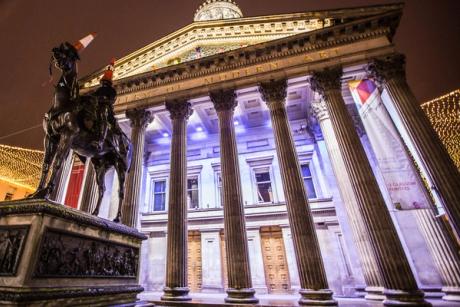
A new focus group has been launched by Artfund and London Gallery Weekend (LGW) with the aim of building better connections and pooling resources between London galleries and regional museums, which have been particularly affected by the budget cuts, soaring energy bills and declining visitors. since the pandemic.
The group’s first meeting took place after last year’s LGW. Attendees included some of the biggest names in the public and private sectors such as Deborah Smith, Director of the Arts Council Collection; Nicholas Thornton, Head of Fine and Contemporary Art at the National Museum Wales; Sarah Horner, Director of Exhibitions at Galerie Max Hetzler; and Laura Lord, Sadie Coles Gallery Director. The group will meet again this month, along with another cohort of gallery and museum representatives.
“Things are incredibly difficult across the UK,” says Artfund director Jenny Waldman. “It’s not that London-based public museums and galleries have it easy, but outside of London there are fewer sources of income.”
Waldman notes how fundraising for regional museums is also much more difficult. “For those in London, there is a community of patrons and collectors who are found in the city,” she says. “It’s quite remarkable that outside of London it’s harder to raise those extra funds that are so vital for museums to be able to put on fantastic exhibitions, be able to commission artists and collect artists’ work.”
Some regional museums operate without a board of trustees or patronage, while others, which fall under the jurisdiction of local or national authorities, are unable to establish budgets in advance, which can lead to a lack of of momentum.
Speaking at last year’s meeting, Katie Bruce, Curator of Glasgow’s Gallery of Modern Art (GoMA), said: “We sometimes lack the confidence to knock on doors ourselves, because we are all fully aware of the slowness of some of our museum processes. be and we are hesitant to approach certain artists or galleries because of our deadlines and our budget […] We realize conversations can be slow and sometimes the pace of working with commercial galleries can seem quite fast.
Other perceived barriers to collecting for museums include practical concerns such as storage, preservation, costs of relocating works, shipping, and inviting international artists to visit.
Galleries, meanwhile, suggest that greater transparency from museums around their programming and acquisition policies would be beneficial so that galleries can be more constructive about how curators approach them. As LGW co-founder Jeremy Epstein says, “Galleries are a huge potential resource for institutions through the many substantive roles we play on behalf of our artists, as curators of archives, production managers and audience developers of artists. A more open forum for communication between institutions and galleries could enable mutual sharing of resources in a way that would benefit both artists and the public.
The group was also concerned about how to avoid conflicts of interest, for example, how a gallery could support a traveling exhibition without too much interference. As Sarah Horner, Director of Exhibitions at the Max Hetzler Gallery, put it: “How do we engage with [museums] in a collaborative way so that our support is not seen as advancing a curatorial agenda? »
Bruce noted how GoMA had worked with a commercial gallery to host a traveling exhibition in 2003 which failed because “loans and different timelines between us weren’t possible”. She added: “We thought we could be much more fluid and flexible, when the reality was we couldn’t. We have become much more autonomous in staging exhibitions, but this has had an impact on the number of traveling exhibitions we organize and we would like to review how we can collaborate with commercial galleries more successfully at the coming.
Collectors donating works to museums are increasingly common and can greatly benefit collections. But, especially when it comes to burning artists, this practice is sometimes used by collectors to gain access to museums in order to benefit their own collections. One of the questions raised by the focus group was how to ensure that this practice is “truly altruistic”.
Another area explored by the group was the idea of co-programming as well as co-acquisition of works, following the partnership established between the National Gallery in London and the J Paul Getty Museum in Los Angeles for the joint purchase of Joshua Reynolds Portrait of Mai. Each museum shared the £50m cost, with UK money coming from the National Heritage Memorial Fund (£10m) and £2.5m from the Art Fund.
However, as important as acquisitions are, one of the ultimate goals of the focus group is to go beyond the transactional and focus on the art sector as an ecosystem.
As LGW co-founder Sarah Rustin says, “[The focus] doesn’t have to be limited to acquisitions and exhibition plans, there are so many other ways the commercial sector can support museums that go beyond financial assistance. This could be by offering assistance to their content team, support with catalog, production, design work, communications and press, and all sorts of other resources. Some institutions simply don’t have in-house teams for this, unlike many commercial galleries.
